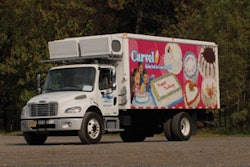
Welch’s is the world’s leading marketer of Concord and Niagara-based grape products—with over 400 items ranging from refrigerated juices and sparkling juice cocktails to jams, jellies and a variety of single-serve products in all shapes and sizes.
Headquartered in Concord, MA, birthplace of the Concord grape, its products are sold throughout the U.S. and in more than 35 countries and territories around the world. That equates to about 5 million pallets of product shipped annually to customers.
With such high volumes and a strong commitment to customer service, Welch’s wanted to ensure it had the most efficient, reliable solution for quick and accurate delivery. So, the company turned to ClearOrbit, an Austin, TX-based provider of real-time supply chain execution and reverse logistics software solutions and a Zebra Technologies value-added reseller.
ClearOrbit has been working with manufacturers and distributors to orchestrate the movement of goods through the extended supply network for over 15 years. Welch’s selected ClearOrbit because of the firm’s reputation and successful track record in extending Oracle enterprise solutions.
ClearOrbit helped Welch’s design and implement a high-speed, high-volume print and apply labeling line for pallets of products packaged and shrink-wrapped for delivery to customers. At the time of implementation, Welch’s was simultaneously implementing an Oracle enterprise resource planning (ERP) system to replace its outdated and rigid legacy system.
“Simultaneous implementation was helpful because we were able to ensure that the two systems worked together seamlessly and smoothly,” says Pat Anderson, project manager at ClearOrbit.
Prior to implementation, ClearOrbit helped Welch’s analyze its process, define the requirements and re-engineer certain processes to streamline work flow and better align the systems to leverage the software’s capabilities.
Previously, tracking of products and batch lots was done manually due to the limitations of the legacy ERP system. With ClearOrbit’s Gemini for Oracle Process Manufacturing system and the new compliance labeling system, Welch’s can now apply a unique identifier bar code label to accurately track batch lots, sub-lots and even individual ingredients from source to finished product to the retailers’ shelves.
At the end of the filling system’s packaging and shrink-wrapping conveyor track, Zebra’s 170XiIIIPlus printers, embedded within Weber Marking Systems’ Model 5200 label applicator, apply the bar coded identification label to the shrink-wrapped pallet.
“On some production lines, the system processes one pallet per minute, so we needed high speed printers such as Zebra’s,” says Gordon Conkling, data collection project manager for Welch’s.
“The printer/applicator is the keystone of this operation and an integral part of our print-and-apply labeling system. We have found the Zebra printers to be extremely durable and reliable.”
The ERP implementation, including the print-and-apply application, took about two years from planning to completion.
“With the system, Welch’s can now record and store in a database a complete genealogy of all products shipped,” says Anderson. “This capability has dramatically reduced the possibility of a ‘hold’ product (that is un-cleared for delivery) leaving the plant. It also makes it much faster and easier for Welch’s to target a product recall, if necessary, by lot or sub-lot number and delivery location.”
Conkling notes, “The Zebra printer has been a good vehicle to ask a lot of questions about our pallets. It’s a gateway into our ERP system. It was easy to install and integrate with our network.”
In addition, as the company taps further into the ERP system’s capabilities, it is adding functionality—such as electronic data interchange (EDI) with customers and the issuance of advance shipping notices (ASNs).
Elsewhere in Welch’s processing facilities, Zebra’s stationary and cart-mounted on demand printers are used for manual labeling applications, as well as transactions not related to packaging. These include:
- Printing of replacement labels, material labels and lists;
- Printing of labels for orders filled in Welch’s “make-up” room where less than full pallet orders are picked and packed;
- Myriad applications in the warehouse and processing areas.
For these applications, Welch’s has deployed Zebra 110XiIIIPlus printers. Some are in fixed locations and others are cart-mounted wireless printers selected to provide optimum mobility and flexibility—the cart is wheeled to where the labels are needed.
Conklin says, “The wireless feature is great—very flexible and convenient—and has also saved the company significantly on cable expenses and additional electrical costs.”
For Welch’s, the print-and-apply bar code labeling system has dramatically improved accuracy and visibility in tracking products through the plant and through its shipping and distribution processes.
Overall, with the business process improvements gained since implementing the ERP system and product identification system, Conklin notes that Welch’s has taken a quantum leap towards achieving the level of accuracy and visibility it was seeking in its product labeling and finished goods shipping line.


















